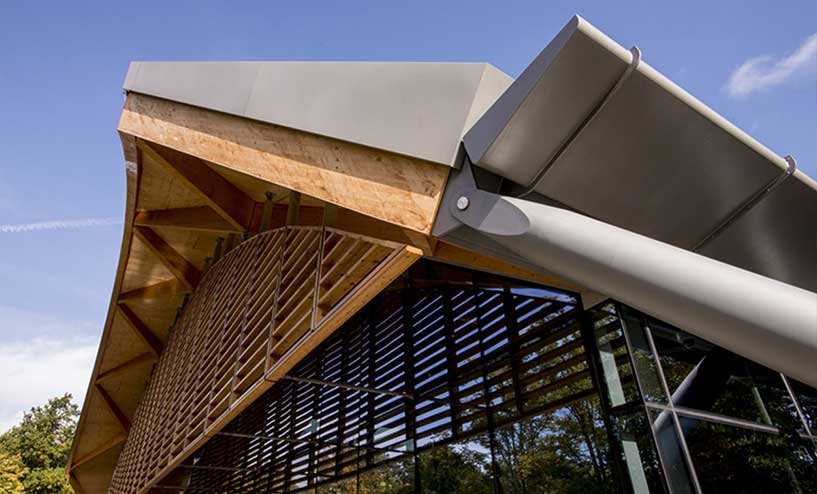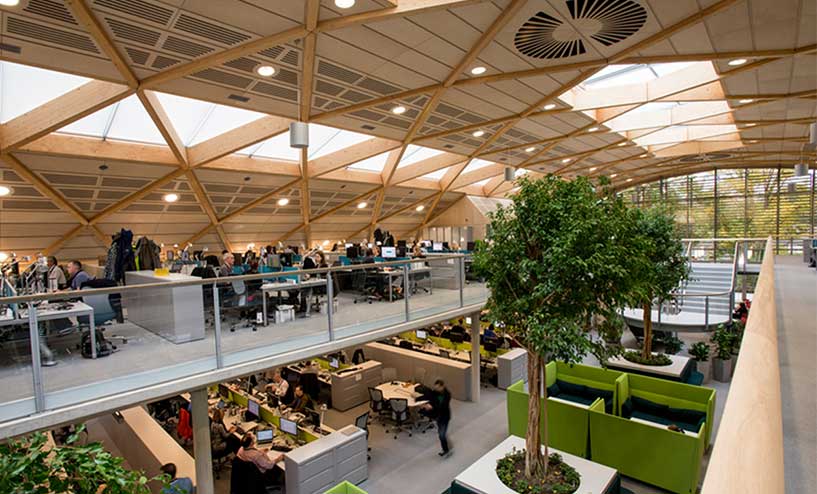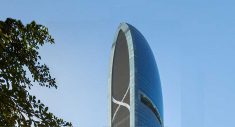The 3,675 m2 low-carbon office design building and visitor centre clearly shows that, through the smart use of design, materials and technology, it’s possible to create a state-of-the-art building with minimal environmental impact.
Thanks to its exemplar approach to sustainability and design, the WWF Living Planet Centre has achieved BREEAM Outstanding certification in 2014.

Since then the building has received an impressive number of awards such as the RIBA National Award 2015, the RIBA NATIONAL AWARD 2015, the RIBA SOUTH EAST SUSTAINABILITY AWARD 2015, the BCO INNOVATION AWARD 2015 and many others.
Highly Commended for the 2015 BREEAM Awards “the WWF-UK Living Planet Centre provides an iconic building that transparently and credibly delivers wide ranging environmental messages.” according to the judges of the prestigious BREEAM Awards.

The building top 10 sustainability features
- The roof’s barrel vault design with interconnecting beams makes it very strong and the glazing allows natural light into the building. It uses less materials than conventional roof designs and these materials are lower in carbon, e.g. responsibly-sourced timber rather than concrete.
- Air ducts and heat pumps allow the building to tap into the constant temperatures beneath the ground to heat or cool the office and visitor centre. A ground source heat pumps (GSHP), coupled with 20 bore holes going down 100m and around 400m of earth ducts underneath the building, provide both heating and cooling to the building.
- Natural ventilation is used in the building where possible thanks to four wind cowls (each 4m tall) on the roof which provide a way for air to flow out of the building. A green-and-red light system on the perimeter windows indicates when it’s the optimum temperature to open or close them.
- 410 solar panels on the roof (covering 510m2) provide up to 20% of the building’s electricity. The remainder of the building’s electricity is supplied from the Thameswey Energy combined heat and power (CHP) plant.
- The building is lit with energy-efficient fluorescent and LED lights. Triggered by movement sensors, they automatically switch off when not in use. The building’s energy use is carefully monitored, and data displayed within the building.
- All wood comes from responsibly-managed forests certified by the Forest Stewardship Council (FSC). In addition building materials are largely procured from recycling stream and/or locally sourced. The carpet tiles, for example, are made from 100% recycled yarn and are installed using a glue-less installation system which virtually eliminates volatile organic compounds (VOCs). GGBS (ground granulate blast-furnace slag – a by product of iron and steelmaking) was used as a cement substitute together with recycled aggregate in concrete, while the concrete sourced from local company.
- The building’s embodied whole life carbon emissions was reduced by 42% over the duration of the building project – at no additional cost.
- Biodiversity is encouraged by bringing the natural world onto the site. Shrubs, trees and flowers were planted and boxes to attract birds and bats put up.
- To reduce the amount of mains water usage, greywater is recycled from hand basins and showers, and rainwater harvested to flush toilets and water the plants. Excess rainwater collected from the roof drains into the wetlands area as part of the sustainable urban drainage system (SUDS).
- The building has easy access to public transport. Plenty of sedum-covered bike racks, showers and a drying room were provided to encourage staff to cycle to work wherever possible.

Project Details
Client: WWF-UK
Architect & Interior Designer : Hopkins Architects
M&E Engineer and BREEAM Assessor: Atelier Ten
Project Manager: King Sturge
Structural Engineer: Expedition Engineering
Quantity Surveyor: Gardiner & Theobald
Contractor: Wilmott Dixon
Brief Consultant: Alexi Marmot Associates




